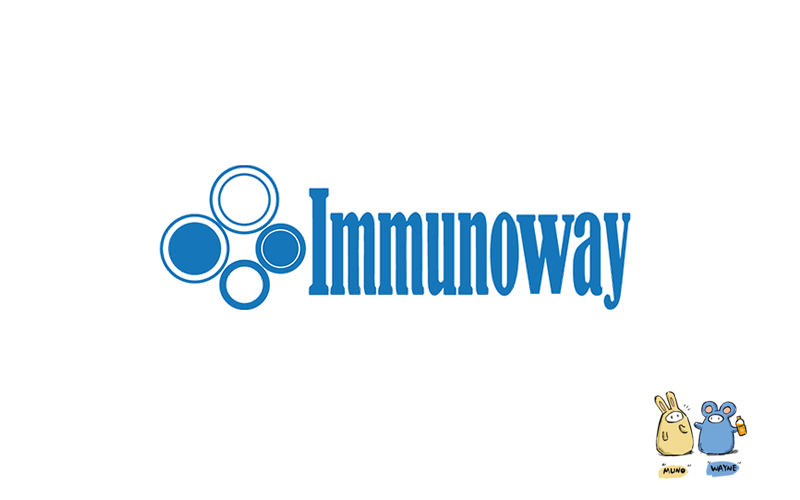
主要信息
Target
CHL1
Host Species
Rabbit
Reactivity
Human, Mouse
Applications
WB, ELISA
MW
132kD (Observed)
Conjugate/Modification
Unmodified

货号: YN0949
规格
价格
货期
数量
200μL
¥3,780.00
现货
0
100μL
¥2,300.00
现货
0
40μL
¥960.00
现货
0
加入购物车


已收藏


收藏
详细信息
推荐稀释比
WB 1:500-2000; ELISA 1:5000-20000
组成
Liquid in PBS containing 50% glycerol, 0.5% BSA and 0.02% sodium azide.
特异性
CHL1 Polyclonal Antibody detects endogenous levels of protein.
纯化工艺
The antibody was affinity-purified from rabbit antiserum by affinity-chromatography using epitope-specific immunogen.
储存
-15°C to -25°C/1 year(Do not lower than -25°C)
浓度
1 mg/ml
实测条带
132kD
修饰
Unmodified
克隆性
Polyclonal
同种型
IgG
相关产品
抗原&靶点信息
免疫原:
Synthesized peptide derived from human protein . at AA range: 140-220
展开内容
特异性:
CHL1 Polyclonal Antibody detects endogenous levels of protein.
展开内容
基因名称:
CHL1 CALL
展开内容
蛋白名称:
Neural cell adhesion molecule L1-like protein (Close homolog of L1) [Cleaved into: Processed neural cell adhesion molecule L1-like protein]
展开内容
背景:
The protein encoded by this gene is a member of the L1 gene family of neural cell adhesion molecules. It is a neural recognition molecule that may be involved in signal transduction pathways. The deletion of one copy of this gene may be responsible for mental defects in patients with 3p- syndrome. This protein may also play a role in the growth of certain cancers. Alternate splicing results in both coding and non-coding variants. [provided by RefSeq, Nov 2011],
展开内容
功能:
Disease:The deletion of 1 copy of the CHL1 may be responsible for mental defects in patients with 3p- syndrome. 3p- syndrome results from deletion of a terminal segment of the short arm of one chromosome 3 and is characterized by multiple congenital anomalies and mental retardation.,Domain:The DGEA motif seems to be a recognition site for integrin.,Domain:The FIG[AQ]Y motif seems to be an ankyrin recruitment region.,Function:Extracellular matrix and cell adhesion protein that plays a role in nervous system development and in synaptic plasticity. Both soluble and membranous forms promote neurite outgrowth of cerebellar and hippocampal neurons and suppress neuronal cell death. Plays a role in neuronal positioning of pyramidal neurons and in regulation of both the number of interneurons and the efficacy of GABAergic synapses. May play a role in regulating cell migration in nerve regeneration and cortical development. Potentiates integrin-dependent cell migration towards extracellular matrix proteins. Recruits ANK3 to the plasma membrane.,PTM:Cleavage by metalloprotease ADAM8 in the extracellular part generates 2 soluble forms (125 kDa and 165 kDa) in vitro and is inhibited by metalloprotease inhibitors.,PTM:N-glycosylated. Contains N-linked oligosaccharides with a sulfated carbohydrate structure type HNK-1 (SO4-3-GlcUABeta1,3GalBeta1,4GlcNAc).,PTM:O-glycosylated.,similarity:Belongs to the immunoglobulin superfamily. L1/neurofascin/NgCAM family.,similarity:Contains 4 fibronectin type-III domains.,similarity:Contains 6 Ig-like C2-type (immunoglobulin-like) domains.,subcellular location:Soluble forms produced by cleavage/shedding also exist.,subunit:May interact with L1CAM. May interact with ITGB1/ITGA1 heterodimer and ITGB1/ITGA2 heterodimer as well as with ANK3.,tissue specificity:Expressed in the fetal and adult brain as well as in Schwann cell culture. Also detected in adult peripheral tissues.,
展开内容
细胞定位:
Cell membrane ; Single-pass type I membrane protein . Soluble forms produced by cleavage/shedding also exist. .; [Processed neural cell adhesion molecule L1-like protein]: Secreted, extracellular space, extracellular matrix .
展开内容
组织表达:
Expressed in the fetal and adult brain as well as in Schwann cell culture. Also detected in adult peripheral tissues.
展开内容
文献引用({{totalcount}})
货号: YN0949
规格
价格
货期
数量
200μL
¥3,780.00
现货
0
100μL
¥2,300.00
现货
0
40μL
¥960.00
现货
0
加入购物车


已收藏


收藏
Recently Viewed Products
Clear allToggle night Mode
{{pinfoXq.title || ''}}
Catalog: {{pinfoXq.catalog || ''}}
Filter:
All
{{item.name}}
{{pinfo.title}}
-{{pinfo.catalog}}
主要信息
Target
{{pinfo.target}}
Reactivity
{{pinfo.react}}
Applications
{{pinfo.applicat}}
Conjugate/Modification
{{pinfo.coupling}}/{{pinfo.modific}}
MW (kDa)
{{pinfo.mwcalc}}
Host Species
{{pinfo.hostspec}}
Isotype
{{pinfo.isotype}}
产品 {{index}}/{{pcount}}
上一个产品
下一个产品
{{pvTitle}}
滚轮缩放图片
{{pvDescr}}




















